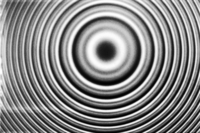
Back بنية دقيقة Arabic Тонкая структура Byelorussian Вĕтĕ тытăм CV Finstruktur Danish Feinstruktur (Physik) German Fajna strukturo Esperanto Estructura fina Spanish Spektrijoonte peenstruktuur Estonian ساختار ریز Persian Structure fine French

In atomic physics, the fine structure describes the splitting of the spectral lines of atoms due to electron spin and relativistic corrections to the non-relativistic Schrödinger equation. It was first measured precisely for the hydrogen atom by Albert A. Michelson and Edward W. Morley in 1887,[1][2] laying the basis for the theoretical treatment by Arnold Sommerfeld, introducing the fine-structure constant.[3]
- ^ A.A. Michelson; E. W. Morley (1887). "On a method of making the wave-length of sodium light the actual practical standard of length". American Journal of Science. 34: 427.
- ^ A.A. Michelson; E. W. Morley (1887). "On a method of making the wave-length of sodium light the actual practical standard of length". Philosophical Magazine. 24: 463.
- ^ A.Sommerfeld (July 1940). "Zur Feinstruktur der Wasserstofflinien. Geschichte und gegenwärtiger Stand der Theorie". Naturwissenschaften (in German). 28 (27): 417–423. doi:10.1007/BF01490583. S2CID 45670149.
© MMXXIII Rich X Search. We shall prevail. All rights reserved. Rich X Search